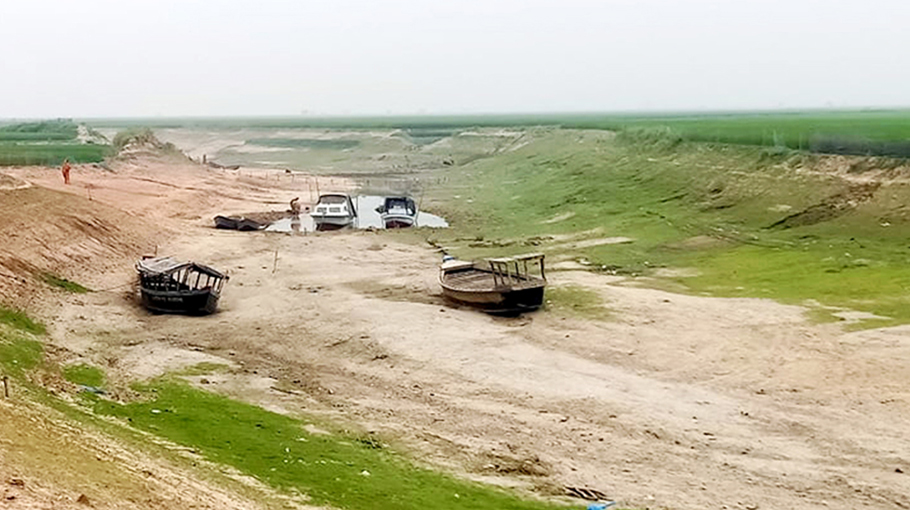Punarbhaba River on the verge of extinction
Farmers demand re-excavation


The Punarbhaba River, which flows through Porsha upazila of Naogaon, is now a dead canal and has become arable land. The Punarbhaba River, which borders India, does not have water during the drought. As a result, it loses its navigability every year and become a dead river with now water. But now in some places, knee-deep water can be seen in small canals. After a while, the water will not be seen. At present the farmers are crossing from one side to the other. Now thousands of bighas of cultivable land have been reclaimed on the banks and riverbed. The locals have been cultivating wheat, mustard and Boro paddy in these lands. The river is filling up with sand because it has not been dug. As a result, during the monsoon season, the river overflows and overflows its banks. And early in the spring, it turned into a dead river.
According to several elders of the district, the Punarbhaba River used to flow for twelve months at a time. During the British and Pakistani period, all the roads in the area were neglected and at that time this river was the only way of communication with different cities. People used to travel from one place to another in small and big boats on the banks of the river. Even the bridegroom's fleet of boatmen could be seen on the river. At that time small and big boats, launches and steamers were moving on this river. People used to carry their produce including paddy, wheat and other products by boat to Rahanpur market in Chapainawabganj district. Many of them used to go to Rahanpur by boat for various purposes and travel by train to different cities of the country including Rajshahi and the capital Dhaka. At that time boats used to crowd at various terminals including Kabli ghat of Patari. In the past, as there were no deep, shallow tube wells in the area, the people of the area used the water of this river for irrigation in various parts of the Barind area and used to produce various crops on hundreds of acres of land.
At present, there is a touch of development in almost all parts of the country, including cities and ports. Due to the construction of dams by the Government of India in the Indian part upstream of this river, the flow of water has been disrupted and the governance of the river has lost its navigability in the course of time. Now it is very easy for people to reach their destination by bus and truck in a short time. They can easily transport their various goods. As a result, the need for river path seems to have been met. As a result, this resurgent river in the border area has lost its past heritage. During the monsoons, the river returns to its full youth due to the torrential downpours and slopes coming down from the upper reaches of India, but before the month of spring, the river turns into a dead canal. It is just a memory with full of sand. In the dry season, if one suddenly sees it, one will not think that it is a flowing river. The river, which is now bordering Punarbhava, would have regained its full youth if it had restored its navigability by dredging system. Due to the rapid drying up of the river, local farmers cultivate groundwater during the Erie-Boro season. They demanded construction of a rubber dam on Nitpur Punarbhaba River. If there is a rubber dam on the river, it is possible to retain water during the dry season. And if there is water in the river during the dry season, the farmers will be able to cultivate with that water.



